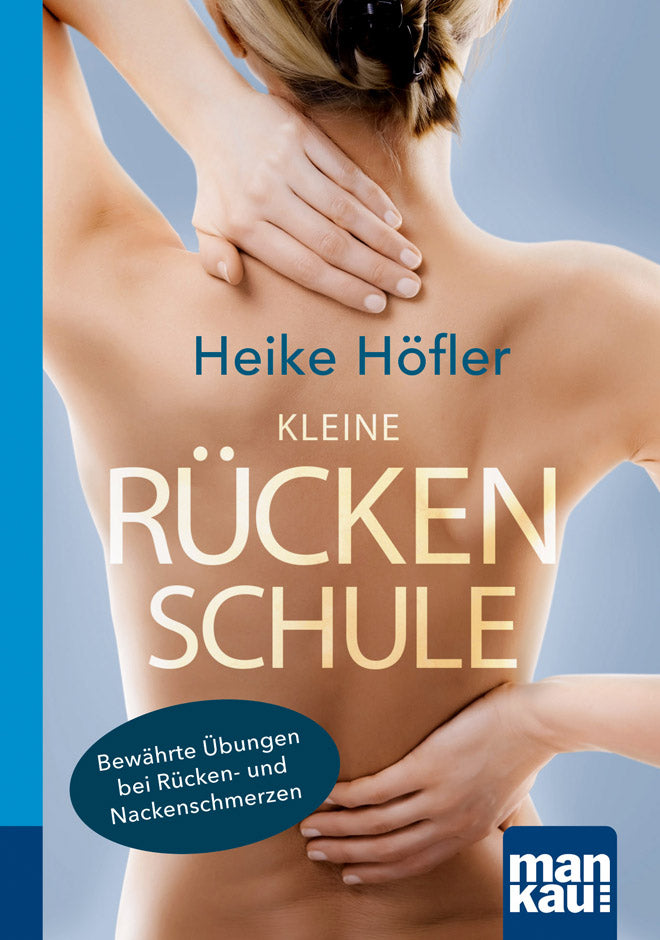
A strong back needs exercise
A strong back needs exercise
Heike Höfler’s “Little Back School” combines a new body perception with targeted muscle building and fascia care
One-sided strain and lack of exercise have made back problems a widespread problem. Strengthening muscles and connective tissue as well as relaxation exercises are the best prevention against chronic complaints.
Everyone knows back pain
The way of life in modern society is not exactly back-friendly: eight out of ten people in Germany complain of pain in the neck or lumbar spine. This is often caused by weak muscles around the spine and muscle tension.
Back pain affects "desk workers" as well as cashiers, warehouse workers, dentists, mechanics, frequent drivers and many other professional groups. Any highly concentrated work in a mostly one-sided position almost always causes muscle tension; this is often constantly aggravated or maintained by stress, lack of exercise or poor posture. Heike Höfler's compact guide shows the most effective exercises to eliminate or prevent back pain.
Relieve your back and relax
"You have to strengthen your back to actively relieve pain," says the state-certified sports and gymnastics teacher, who has decades of professional experience in health clinics and practices, as well as courses and lectures for health insurance companies, adult education centers, companies and other institutions. Her book "Little Back School" is therefore about body awareness, mindfulness and the best, most effective and most powerful exercises for muscles and all structures of the spine: "The exercises in this book will help you to strengthen your back and the supporting muscles, keep the tissue elastic and improve your posture."
Regular exercise - a few minutes a day is enough - is important to keep muscles, ligaments, tendons and fascia healthy and elastic. This is because stuck fascia and muscle fibers hinder every movement and restrict mobility, which puts a lot of strain on joints and causes them to wear out more quickly. Trained postural muscles and supple fascia, on the other hand, relieve the strain on the skeleton, vertebral joints and intervertebral discs and protect against early wear and tear and pain. A healthy back needs dynamism and also sufficient relaxation to counteract a continuous increase in back pain.
Programmed for movement
Contrary to the old opinion that you should take it easy when you have pain, today the rule is not to take it easy, but to keep moving gently. We now know that the tension that leads to back pain can best be relieved and prevented through movement. Otherwise, the connective tissue can stick together and the pain becomes chronic.
The back, the human skeleton and also the extremities are made for movement. However, the more civilization develops, the more at risk the spine is because people have developed devices and apparatus that are extremely useful, but at the same time ensure that the strain on their muscles and their range of movement is reduced. Since muscles, tendons, ligaments and joints that are not used eventually atrophy and lose their ability to bear weight, pain and signs of wear and tear are the inevitable result. Back school therefore relies on a variety of movements and varied training in order to (re)consciously perceive the body and correct poor posture.
Book tip:
Heike Höfler: Little back school. Compact guide. Tried and tested exercises for back and neck pain. Mankau Verlag, 1st edition October 2016, paperback, color, 126 pages, 7.99 euros (D) / 8.20 euros (A), ISBN 978-3-86374-329-1.
Link recommendations:
More information about the compact guide "Little Back School"
To the reading sample in PDF format
More about the author Heike Höfler
To the Internet forum with the author Heike Höfler











